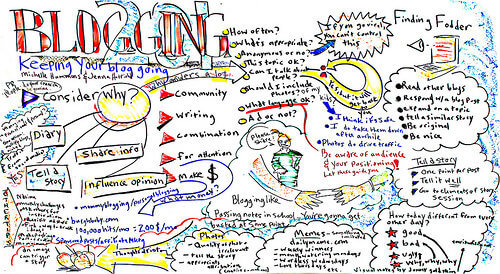Two years ago in late December I made a resolution that I would commit to writing one blog post on my own personal blog every day. Yes: 365 days, 365 pieces of content.
In reality, when I made that promise it did not seem much, but only way down the track did I realise what a commitment I’d made. Sometimes I was up until late at night writing two or three articles, even scheduling them in advance to go live over the next few days just so I could give myself a night off. I can see why a lot of bloggers see it as a full-time job.
My main problem was this: my blog focused on a niche sport in rugby league where the audience is most probably limited to just rugby league fans. There are only so many times you can write about a subject or provide an opinion piece in response to a news article every day. It led me to the point where I was asking myself whether I was just writing for the sake of it.
What exactly is the best strategy?
But with my own experiences, it has got me thinking about what exactly a good strategy would be in terms of not only content creation but also content curation. All media sources provide a mixture of content ranging from press releases, to feature articles and opinion pieces. Even more so, content now mixes a wider range of skills from photography and video.
Whether it is SEO, content marketing, PR or a mix, it is now regarded that websites keep their website fresh by adding new content frequently, not least to maintain the interest of readers but also to encourage possibility of people landing on the site through a combination of natural searches, social shares and built links.

I posed a question to my colleagues about what the best PR strategy for someone writing content would be. Was it best to set out to write as much content as possible like I did or was it better to be more selective and only add something that had been thoroughly researched and planned? The responses I got suggested that it was always better to do more than less but a good strategy combined both.
Different things work for different people
However, it all comes down to aims. A fashion blogger just starting out, for example, has an aim to build a following, reputation and regular readership. Whilst I am sure they would love to be number one on search engines, in many ways a fashion blogger can achieve their aims just as well through social channels and networking.
They rely on regular content from themselves as well as talking about current topical issues from brands to keep a readership there. Writing hundreds of articles a year will only keep traffic visiting regularly and people clicking through social media.
Business aims are different
Business aims are completely different and we all know what those are without going into great detail: simply profitability and higher rankings driving traffic.
But for a business, content is not only king but it is also the keystone to helping them to be successful. Larger brands can generate PR naturally and certainly those you see every day on the High Street. They can afford to be more relaxed in their strategies and err on the side of carefully planned pieces, produced over many weeks or even months.

But for SMEs and local businesses serving a particular industry, it is much more difficult. Aside from budgetary and staff constraints, they also – like the bloggers – have to build up some form of reputation first. The difficulty is that there are journalists and websites out there committed to providing industry news and so content may already be old before you have time to share it.
The method of just producing content every day and not worrying about anything else is good for a readership and every successful site needs recurring visitors (after all if they like it, they may talk about it and share it). But links are still a vital factor in the rankings and there is every chance that people can fall into a trap of getting people that read the content but then click off and go somewhere else.
That in itself is the challenge: links are good for driving traffic to content but not all content is shareable or linkable.
So what is the solution in all of this?
There are many success stories from businesses and blogs out there that write an abundance of content and it working. Our CEO, Ian Harris, wrote a blog on Search Engine Journal on how the size of content can benefit companies too, which is always worth keeping in mind. Returning to my own experiences, aside from following a load of people on social media to ensure I was pushing content out and getting it in front of many eyes as possible, regular content helped to the point where I had tripled my audience over the course of a few months.
I eventually gave in to the fact that I could not keep writing once a day, for a various number of reasons, and wrote only when I felt like I had something invaluable to say. My readership fell as a result, as depicted on the graph above, where it shows the contrast from January 2013 writing two or three pieces per day, to February just once a day and beyond all the way down to May when I committed to writing infrequently.
The foundation for me is that all websites creating content have to produce it regularly to give a campaign a successful start but reduce it gradually over time once a readership becomes more established. A slapdash approach to content risks readers going elsewhere. A healthy mix of topical content plus a larger PR campaign piece planned over many months, and effectively time managed, is a great compromise.


